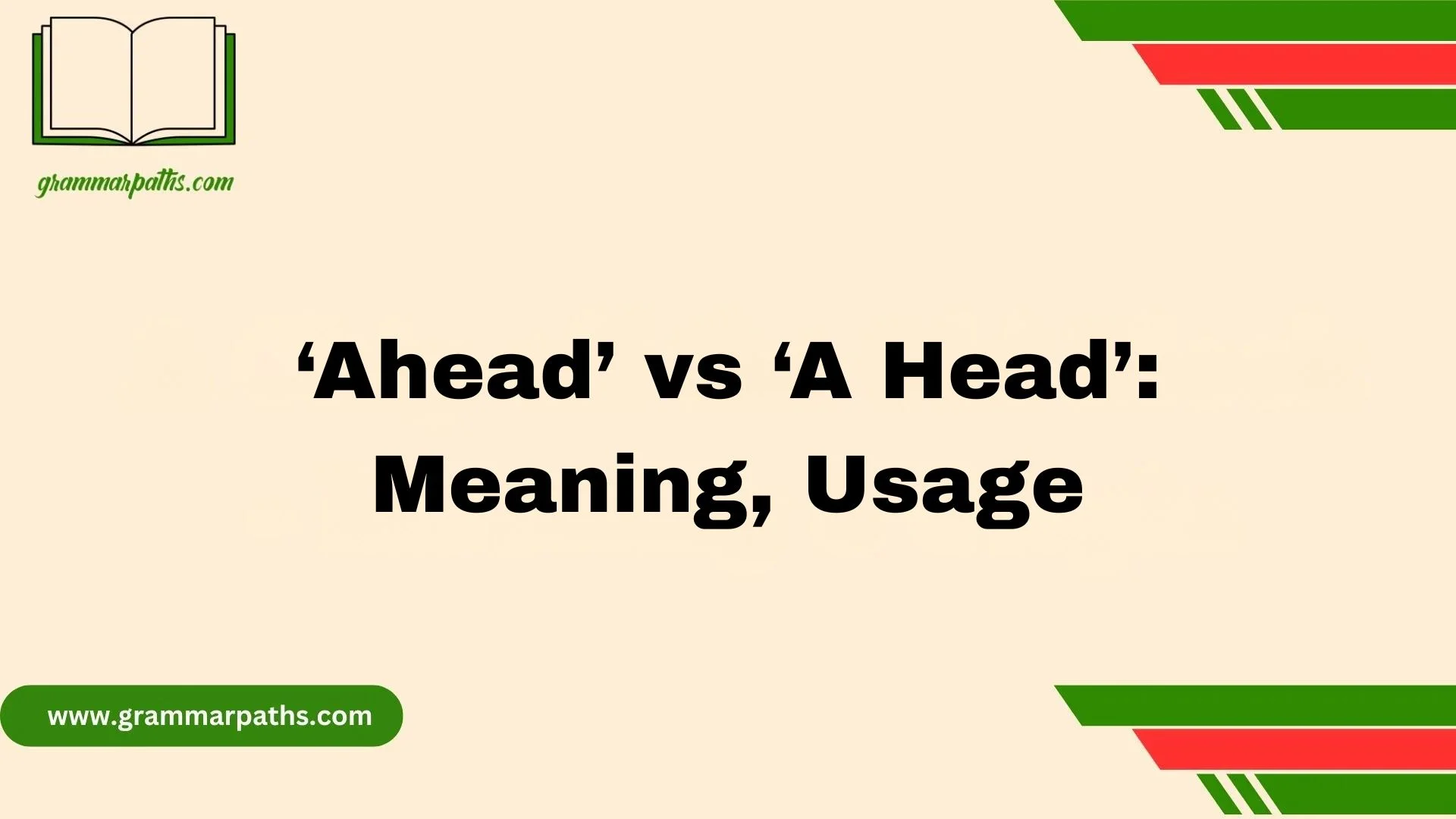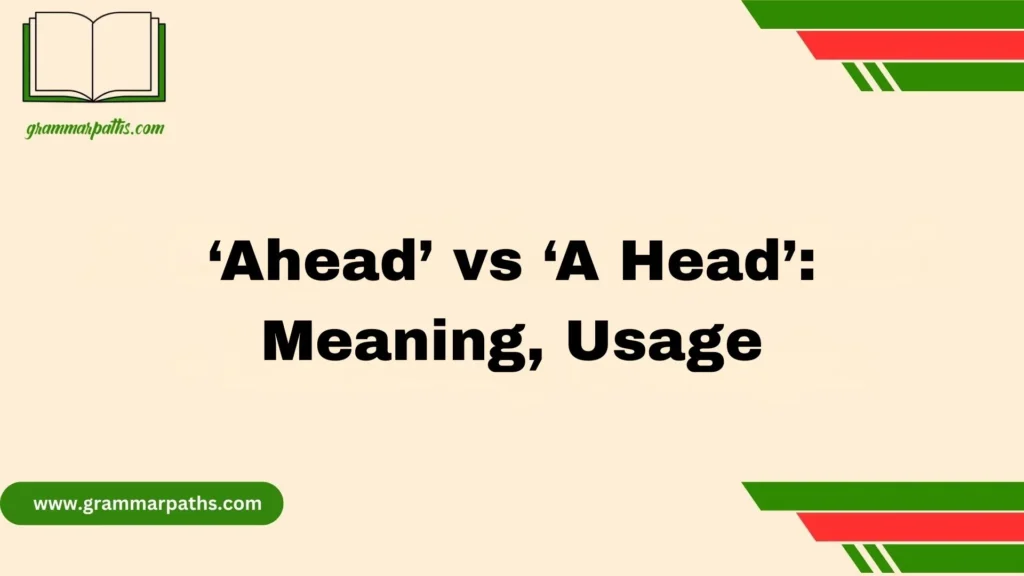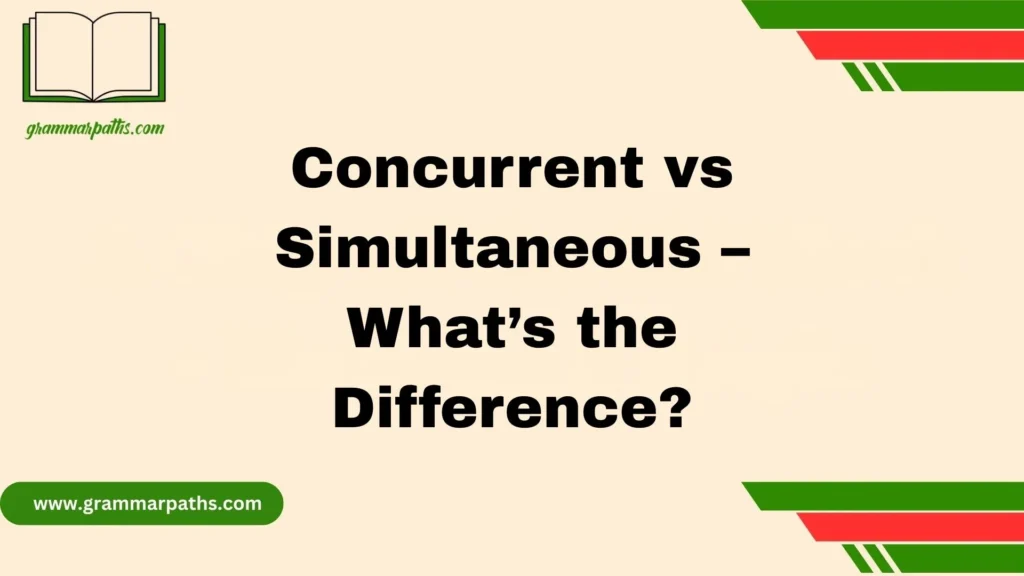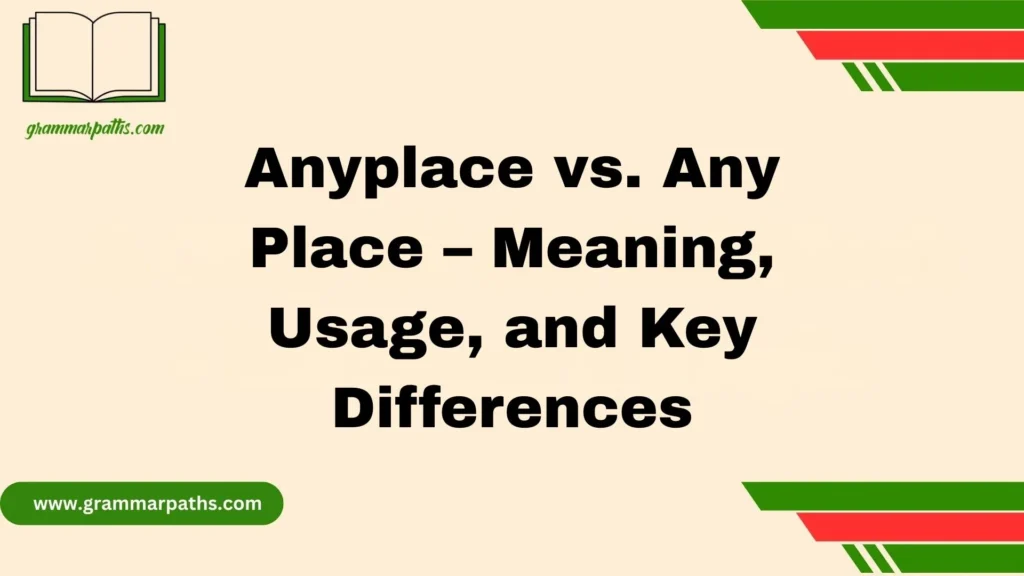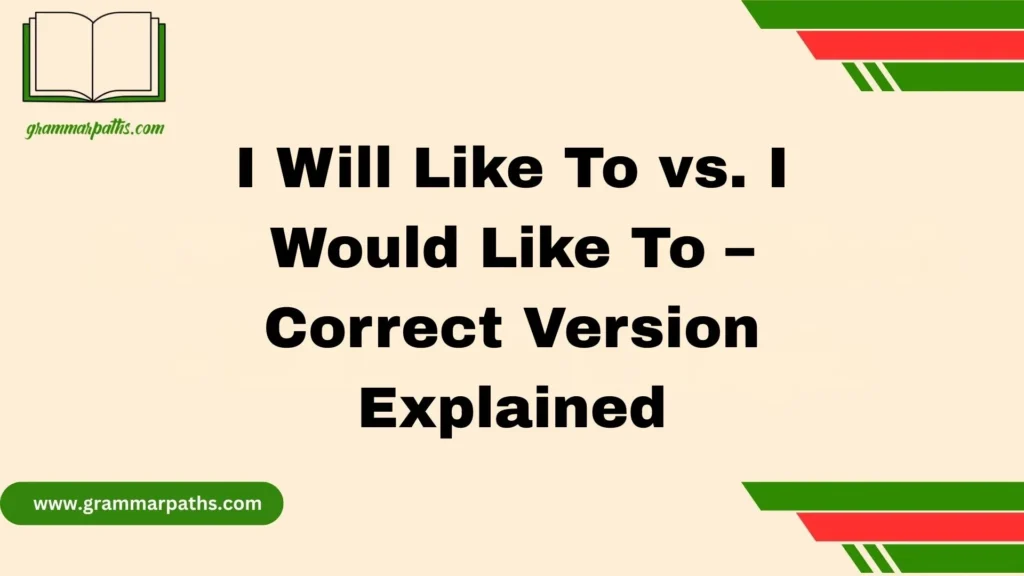In my role as a teacher, I’ve designed sessions where practice in both everyday conversation and formal settings reduces confusion around homophones like “‘Ahead’ vs ‘A Head’.” Understanding their usage in the correct context ensures the meaning is clear, and it helps learners improve their writing skills and speaking abilities. I always remind them that recognizing the difference comes with a good guide, steady learners, and well-placed tips that reinforce grammar, rules, and examples.
During class, real mistakes in English often involve tricky phrases that shake confidence, but I’ve seen it grow quickly with careful attention to the message and tone. Whether in public speaking or producing a polished, purposeful draft, the right approach is backed by expert advice, repetition, and a drive to master the proper form. When curious learners engage with a comprehensive method, the process becomes easier, even when the hard parts feel tough to handle.
Defining the Two Terms
What “Ahead” Means
- Part of speech: adverb or adjective.
- Definition: describes a position in space or time, or progress in comparison to others.
- Function: indicates movement, direction, advantage, or something in the future.
Examples:
- “She walked ahead of the group.”
- “The company is ahead of its competitors.”
- “Plan three weeks ahead of schedule.”
In each case, “ahead” modifies an action or state, showing position, progress, or foresight.
What “A Head” Means
- Part of speech: noun phrase (“a” = article, “head” = noun).
- Definition: refers to a single head (literal or figurative).
- Function: identifies a physical head or counts individuals, often in idioms.
Examples:
- “He wore a head of curly hair.”
- “The farm has fifty cows, each worth $2,000 a head.”
- “They needed a head of cabbage for the recipe.”
Here, “a head” refers to a thing or unit, not a direction or advantage.
Key Differences at a Glance
To make the contrast clearer, here’s a quick reference table:
| Feature | Ahead | A Head |
| Part of Speech | Adverb/Adjective | Noun Phrase |
| Meaning | Forward position, progress, direction | A single head (literal/figurative) |
| Usage | Describes where/when something happens | Identifies an object or unit |
| Example | “He’s two steps ahead.” | “Cabbage costs $3 a head.” |
Mnemonic tip:
- “Ahead” = think of “forward” or “future.”
- “A head” = think of “one head.”
Common Misconceptions and Errors
One reason these words confuse people is their phonetic similarity. When spoken, “ahead” and “a head” sound almost identical. The brain often doesn’t catch the space, leading to spelling mistakes.
Examples of Errors
- “The price is $50 ahead.”
“The price is $50 a head.” - “She went a head of the class.”
“She went ahead of the class.”
Another misconception is assuming “a head” is a typo of “ahead.” In reality, both are correct but apply to different contexts.
Context Matters: Position vs. Object
To understand when to use each, think about context.
- Ahead = position, movement, or planning.
- “Run straight ahead until you see the sign.”
- “She’s far ahead in the competition.”
- A head = an object, unit, or countable noun.
- “Each ticket costs $25 a head.”
- “They spotted a head of broccoli in the basket.”
Real-Life Scenarios
Imagine you’re buying concert tickets. The clerk says, “They’re $100 ahead.” That makes no sense. But if they say, “They’re $100 a head,” it clearly means per person.
On the other hand, if you’re running a race, saying “She’s a head of me” is wrong. The correct phrase is “She’s ahead of me.”
Everyday Usage Examples
Let’s look at how these words function in real-world settings.
“Ahead” in Use
- Travel: “The road ahead is blocked.”
- Competition: “He’s one goal ahead.”
- Planning: “Book tickets weeks ahead.”
“A Head” in Use
- Anatomy: “The statue had a head missing.”
- Counting: “The cattle sold for $1,500 a head.”
- Food: “Buy a head of lettuce.”
Notice how “ahead” relates to direction or time, while “a head” refers to things or people.
Expressions and Idioms
English is full of idioms using these words.
Common Expressions with “Ahead”
- Go ahead: permission to proceed.
- Look ahead: plan for the future.
- Ahead of time: earlier than expected.
- Step ahead: having an advantage.
Example: “Go ahead and ask your question.”
Common Expressions with “A Head”
- Price per head / a head: cost per person.
- Two heads are better than one: collaboration helps.
- A head for business: natural skill.
Example: “Dinner costs $40 a head.”
These idioms highlight why precision matters—mixing them up alters meaning.
Why Word Choice Matters
Choosing the wrong form may not always stop someone from understanding you, but it can:
- Make writing look unprofessional.
- Confuse readers in academic or business settings.
- Change meaning entirely.
Example of Confusion
- “The company is $500 a head.” → Suggests each person costs $500.
- “The company is $500 ahead.” → Suggests the company is financially in front by $500.
A single space can completely flip the sense of a sentence.
Historical and Linguistic Background
Understanding the origin helps clarify why these words exist separately.
- “Ahead” evolved in Middle English from “on heafod” (meaning “on the head” or “in front”). Over centuries, it merged into one word describing forward movement or advantage.
- “Head” has Old English roots (“heafod”), referring to the physical head. The phrase “a head” naturally developed as a unit of counting livestock, produce, or individuals.
So, while they share the same root, their grammatical paths diverged long ago.
Expert Insights and Practical Guidance
Linguists and grammar experts emphasize that the key lies in function.
- “Ahead” works as an adverb/adjective and cannot be counted.
- “A head” works as a noun phrase and can be pluralized (“two heads,” “three heads”).
Expert Tip: When in doubt, try replacing the word:
- If you can swap it with “forward” or “beforehand,” use “ahead.”
- If you can swap it with “one person” or “one object,” use “a head.”
Learning Tools and Resources
Here are reliable tools that can help learners avoid mistakes:
- Merriam-Webster Dictionary
- Cambridge Dictionary
- Grammarly and ProWritingAid grammar checkers.
- Purdue OWL Writing Lab for academic writing help.
These tools not only define words but also provide examples in context.
Tips for Non-Native Speakers
Many learners confuse these terms because their languages don’t have a similar distinction. Here are some strategies to avoid mistakes:
- Practice with examples: Write 5 sentences with “ahead” and 5 with “a head.”
- Use flashcards: Pair sentences with correct usage.
- Focus on idioms: Learn common expressions, as they often clarify meaning.
- Listen carefully: Pay attention to how native speakers use each form in context.
Conclusion
Understanding the difference between ‘Ahead’ vs ‘A Head’ is more than a grammar exercise—it’s about writing and speaking with clarity. When learners practice with real-life examples, focus on the rules, and learn from mistakes, their confidence naturally grows. Whether in public speaking or professional writing, using the correct word ensures your message feels polished and purposeful. With consistent practice, expert advice, and a comprehensive guide, even tricky phrases become easier to handle.
FAQs
Q1: Why do people confuse ‘Ahead’ vs ‘A Head’?
Because they sound the same (homophones), but their meanings and usage differ.
Q2: How can I remember the correct usage?
Think of ahead as moving forward, while a head refers to the body part or counting “one head.”
Q3: Do native English speakers also make this mistake?
Yes, even native English speakers can make this mistake, especially in writing.
Q4: What’s the best way to master this distinction?
Use repetition, review examples, follow grammar rules, and seek expert advice.
Q5: Can using the wrong form change the message?
Absolutely. A small mistake can alter the tone or message and make writing less clear or professional.

Mia Rose is the passionate writer and founder of GrammarPaths.com, a resource dedicated to helping learners master English grammar, idioms, and writing skills with ease. With a deep love for language and years of experience in teaching and content creation, Mia simplifies complex grammar rules into clear, practical guides that readers can instantly apply.
